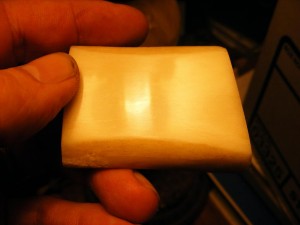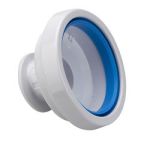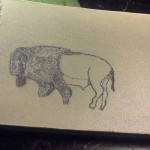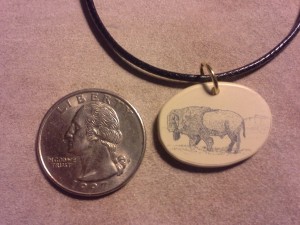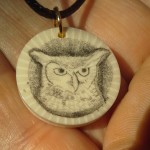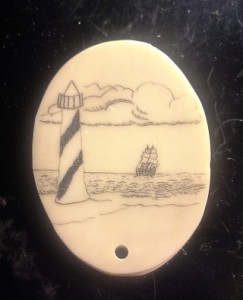 I was setting up the “Sun Motif” scrimshaw I had created on a casein cabochon and decided I should go ahead and drill the one-off light house to put on a chain as well. Carefully measuring I marked the back and drilled a hole through – on the bottom. Oops. Oh well, sour grapes, we’ll see how it holds up to a second sanding.
I was setting up the “Sun Motif” scrimshaw I had created on a casein cabochon and decided I should go ahead and drill the one-off light house to put on a chain as well. Carefully measuring I marked the back and drilled a hole through – on the bottom. Oops. Oh well, sour grapes, we’ll see how it holds up to a second sanding.
The sun came out better, checked and sure enough, I’d marked it at the bottom instead of the top. Think drilling face-up should be my preferred method.
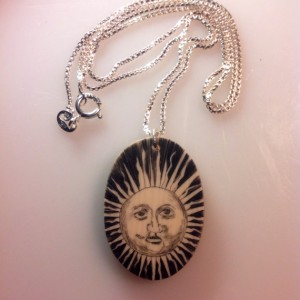

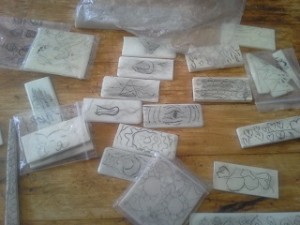 My set of keys have been used by my industrious daughter to create a bagful of her own scrimshaw, and she has had a great time working with it. She also found my other material including some very nice mammoth ivory which now has her beginning scrimshaw art carefully tucked away, since she created them and presented them to me for my birthday. Can’t get angry for that, it was a thoughtful idea, and I wouldn’t sand them down if they were the last pieces of mammoth ivory on earth.
My set of keys have been used by my industrious daughter to create a bagful of her own scrimshaw, and she has had a great time working with it. She also found my other material including some very nice mammoth ivory which now has her beginning scrimshaw art carefully tucked away, since she created them and presented them to me for my birthday. Can’t get angry for that, it was a thoughtful idea, and I wouldn’t sand them down if they were the last pieces of mammoth ivory on earth.